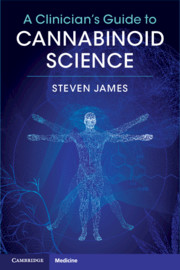Book contents
- A Clinician’s Guide to Cannabinoid Science
- Reviews
- A Clinician’s Guide to Cannabinoid Science
- Copyright page
- Dedication
- Contents
- Preface
- Section 1 An Introduction to Cannabinoid Science
- Section 2 Potential Therapeutic Uses of Cannabinoids in Clinical Practice
- Chapter 6 Cannabinoids and Pain
- Chapter 7 Cannabinoids and Neuropsychiatry
- Chapter 8 Cannabinoids in Sleep and Circadian Rhythms
- Chapter 9 Cannabinoids and Inflammation and Autoimmune Disorders
- Chapter 10 Cannabinoids and the Eye
- Chapter 11 Cannabinoids and the Skin
- Index
- References
Chapter 8 - Cannabinoids in Sleep and Circadian Rhythms
from Section 2 - Potential Therapeutic Uses of Cannabinoids in Clinical Practice
Published online by Cambridge University Press: 12 October 2020
- A Clinician’s Guide to Cannabinoid Science
- Reviews
- A Clinician’s Guide to Cannabinoid Science
- Copyright page
- Dedication
- Contents
- Preface
- Section 1 An Introduction to Cannabinoid Science
- Section 2 Potential Therapeutic Uses of Cannabinoids in Clinical Practice
- Chapter 6 Cannabinoids and Pain
- Chapter 7 Cannabinoids and Neuropsychiatry
- Chapter 8 Cannabinoids in Sleep and Circadian Rhythms
- Chapter 9 Cannabinoids and Inflammation and Autoimmune Disorders
- Chapter 10 Cannabinoids and the Eye
- Chapter 11 Cannabinoids and the Skin
- Index
- References
Summary
Disturbances in sleep are frequent complaints and numerous remedies have been proposed since the beginning of recorded time. Probably cannabis use has existed for just as long for many things including sleep and is still used many nights for a way of having a good sleep.
- Type
- Chapter
- Information
- A Clinician's Guide to Cannabinoid Science , pp. 100 - 112Publisher: Cambridge University PressPrint publication year: 2020



